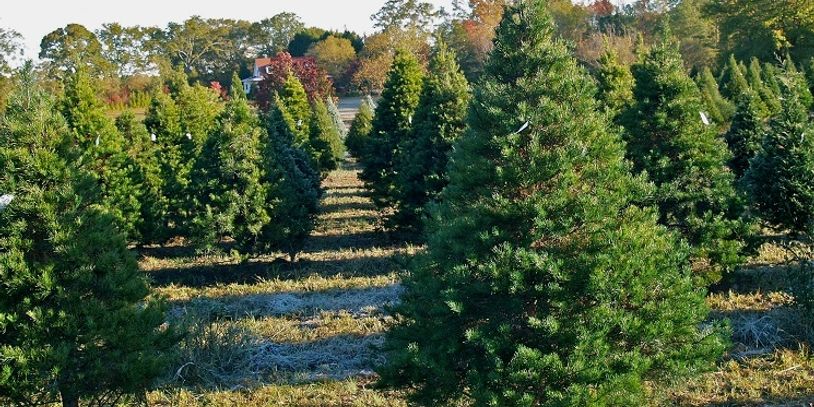Christmas Tree Varieties
Cut Your Own - Virginia Pine $10/ft (minimum $50)

The Virginia pine has long been the staple for the Christmas tree industry in the South. Its branches are stout and woody, and its bark is typical for most pines.
The Virginia pine's needles occur in pairs. They are twisted and range from 1.5 to 3" in length. They are relatively short when compared to those of other pines.
real vs artificial trees

Keeping it REAL! It's the natural choice!
Where do REAL trees come from and how does Christmas tree farming affect the environment?
In the past, most Christmas trees came from the forest; today approximately 98% are grown on Christmas tree plantations.
Most southern grown Christmas trees take 4-5 years to reach marketable heights. During that time, farmers work very hard caring for their trees. Trees must be fertilized, protected from insects, and pruned two to three times annually. Mowing is required to reduce unwanted competition during the summer months.
While Christmas trees are growing, they add oxygen to the atmosphere and provide habitat for wildlife. Real trees are a renewable, recyclable resource.
Once a tree has been harvested and the Christmas season is over, the trunk and branches can be used as mulch for gardens, parks or in animal stalls. The mulch provides a protective barrier for the roots of other plants and vegetation while preventing weeds from growing. The mulch then decomposes, providing the nutrients plants need to thrive. Mulching programs are a fast-growing trend in communities throughout the nation.
Where do fake or artificial trees come from and how do they affect the environment?
Most artificial trees (85%) in the U.S. are imported from China.
As quoted from the National Christmas Tree Association: Artificial trees are a petroleum-based product that consume vast resources during fabrication. A burden to the environment, artificial trees are not biodegradable and will remain in landfills for centuries after disposal. The average usable life span of an artificial tree is only six years.
Support local farmers and make your Christmas a REAL Christmas. Farmers thank you.
*The Littlest Christmas Tree Farm is a member of The Southern Christmas Tree Association.
REAL TREES
- Fresh pine scent
- Add to the overall Christmas experience of choosing and cutting down your own tree
- Produce oxygen and clean the air
- 100% Biodegradable
- Support local tree farmers
- Provide habitat for wildlife
ARTIFICIAL TREES
- Most are made of metals including toxic lead and petroleum-based plastics
- Most are manufactured in China
- Stay in landfills for centuries
- Require yearlong storage
This website uses cookies.
We use cookies to analyze website traffic and optimize your website experience. By accepting our use of cookies, your data will be aggregated with all other user data.
